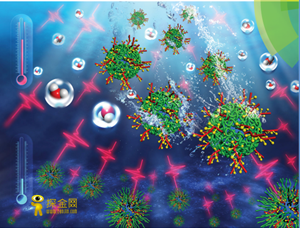Magnetic resonance imaging accurate detection of human body temperature in Wuhan has progressed

Magnetic resonance is an excellent non-invasive clinical diagnostic technique, but it is limited by its sensitivity. The difference between the tumor tissue and the normal tissue microenvironment, especially the detection of small temperature differences, does not achieve very good results. Recently, the Ultrasensitive Magnetic Resonance Research Group led by researcher Zhou Xin of the Wuhan Institute of Physics and Mathematics, Chinese Academy of Sciences, has developed a new method for magnetic resonance detection based on the small temperature difference within the human physiological temperature range. The relevant results are in the form of cover papers. Posted in the latest edition of Chemical Communication magazine.
In this work, the researchers prepared a micelle type magnetic resonance contrast agent to enhance its sensitivity, and the contrast agent can respond to minute temperature changes within the human physiological temperature range. Using heat-sensitive micelles as the carrier, the researchers designed this nano-magnetic contrast agent based on chemical exchange saturated transfer imaging (CEST MRI). The micellar particles with a diameter of less than 100 nm undergo structural and morphological changes at 37°, changing the chemical exchange rate of the microenvironment in which the contrast agent is carried, and the chemical exchange saturation transfer effect has changed significantly. Through chemical exchange saturated transfer imaging, the researchers obtained an intelligent amplification of this temperature-sensitive contrast agent at different temperatures. Because the temperature range of the response is close to the physiological temperature of the human body, the contrast agent has important significance in potential clinical applications.
The study was supported by the National Natural Science Foundation of China.
Little friends, rushing to pay attention to the gold bar Internet cafes, take you to explore the latest and most complete information in the industry, let us explore further!
 Â